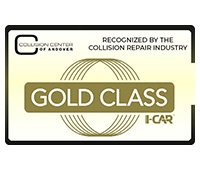Preventing Tire Blowout and Collisions
It can happen to anyone. You’re driving along on the road and unexpectedly you hit a deep pothole, bump the curb, or run over a nail, and suddenly you are faced with tire blowout. You try to steer through it and pull off the road without losing control. Unfortunately, not everyone escapes collision when a tire blows out – and not everyone escapes injury.
The National Highway Traffic Safety Administration (NHTSA) estimates around 400 fatalities every year may be attributed to tire failure. Tire blowouts are said to cause tens of thousands of collisions annually. That’s why it’s vital to check your tires regularly and replace them when warranted to help prevent an unexpected breakdown or even a devastating collision.
Not only does replacing your tires regularly help avoid breakdowns and crashes, according to the NHTSA, tires in good condition also help improve vehicle handling and fuel economy.
Take note of manufacturers recommendation for safety
While guidelines for vehicles and tires may vary, most vehicle manufacturers recommend tires be replaced every six years, regardless of how many miles have been driven on them. Be sure to check your owner’s manual for specific recommendations.
While it might be tempting to keep old tires that otherwise look fine to the eye, be aware of the possibility of dry rot. Even in storage, tires can degrade over time as the oils and chemicals in the rubber compound break down or evaporate as the result of UV exposure. Tires in warm climates and coastal areas also have a reduced life span. Reduced flexibility can lead to cracking, which can lead to tire failure. It’s very dangerous when the tread begins to separate from the tire and can lead to loss of vehicle control.
Complete regular safety checks
It only takes a few minutes each month to check the condition of your tires. While tire life is often dependent on the tire manufacturer and the environment in which they are used, there are general steps the NHTSA recommends you follow every month to ensure safety:
- Check the tire pressure of all four tires, including the spare
- Inspect tires for uneven wear patterns on the tread
- Check for cracks, foreign objects, or other signs of wear or trauma
- Remove bits of glass and other foreign objects wedged in the tread
- Make sure your tire valves have valve caps
- Check the tire information placard or owner’s manual for the maximum recommended load for the vehicle
- If you are towing a trailer, remember that some of the weight of the loaded trailer is transferred to the towing vehicle
How do I check my tires for safety?
Tires have built-in treadwear indicators that signify when it is time to replace your tires. Here are some helpful hints from the NHTSA on how to check your tire for uneven wear or worn treads:
- Check out the raised sections spaced intermittently in the bottom of the tread grooves known as the treadwear indicators. You know it’s time to replace your tires when they appear even with the outside of the tread.
- You can also check your wear by inserting a Lincoln penny (head pointing down) into the tread. You will know it’s time to replace your tires if the tread doesn’t cover Lincoln’s head.
If you need any work done, or existing damage repaired, contact the Collision Center of Andover at (316) 733-9310, and we will get you back on the road.





